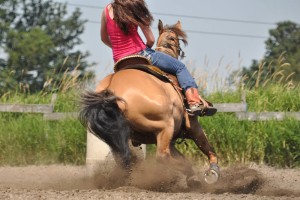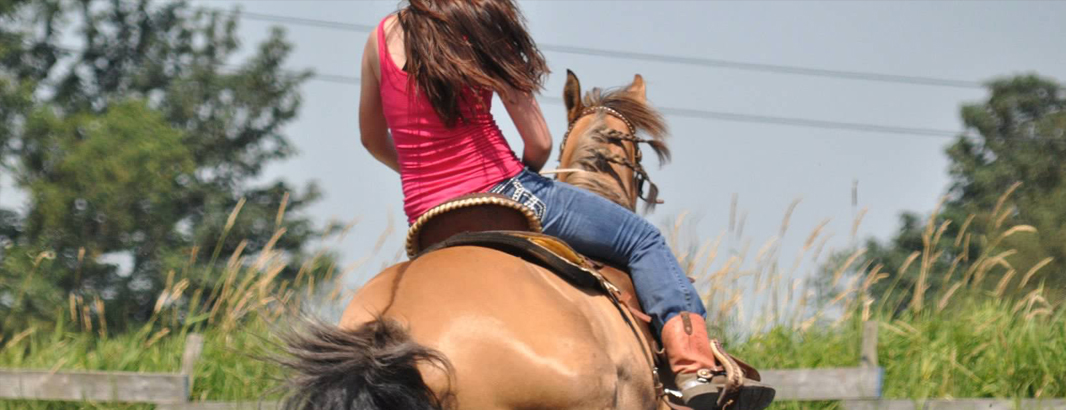Joint Injections: What You Need to Know About this Common Procedure
by Dr. Liz Devine, DVM, MS, DACVS-LA
Musculoskeletal injury is very common in our equine athletes. The diagnosis and treatment of these injuries often involves joint injections. While this is one of the more common procedures performed by equine veterinarians, many owners do not know the reason that joints are injected or the process that goes into these injections.
There are two main reasons to inject something into a joint: diagnosis or treatment of a lameness. A lameness exam consists of watching the horse move and then numbing, or blocking, individual nerves or joints in order to localize the pain in the limb. If a numbing agent is injected into a joint and the horse’s lameness improves, this is a clear indication that the pain is coming from that particular joint. This allows your veterinarian to focus on imaging that area in order to come up with a diagnosis for the lameness.
Once a diagnosis has been obtained, your veterinarian may recommend injections in order to treat the pain and inflammation in that joint. In some cases, the horse is not lame enough to localize the pain with blocking. In these horses, veterinarians can use flexion tests, which are stress tests that we put on certain joints in order to exacerbate any mild pain. Positive flexion tests help to guide whether a horse may benefit from injections.

Steroids are a very potent anti-inflammatory and are the most common medication used in joint injections. There are several types of steroids, and the drug that is used depends on the joint that is being treated, the individual patient and the preference of the veterinarian. In some cases, hyaluronic acid will be recommended as well. This is a joint lubricant and has also been shown to have some anti-inflammatory properties. After joint injections, many veterinarians recommend a period of rest before going back to work and a systemic anti-inflammatory for a few days.
While joint injections are a common procedure, they can be risky for the horse and the veterinarian if proper precautions are not taken. Even typically very well-behaved horses can object to having needles stuck into their legs. Therefore, it is important that an experienced horse handler be the one holding the horse during this procedure. Sedatives can be given intravenously; they not only cause profound sedation, but also provide some analgesia so that the injections don’t hurt quite as much. This makes the procedure safer for the people involved and less traumatic for the horse.
Another very important part of this process is joint preparation. It is essential that bacteria is not introduced into the joint during injections. Horses should be taken to an area that is out of the wind and away from stall cleaning, sweeping, etc., which can aerosolize dirt and debris. Your veterinarian will do a sterile preparation of the joint, including scrubbing with an antiseptic soap such as chlorhexidine or betadine and wiping these off the leg with alcohol. Even with a sterile preparation, a very small percentage of horses can get a joint infection following injection. This is a serious complication, and it is important that horse owners pay close attention to their horses following injection. If your horse’s lameness worsens, or if there is heat or swelling at the injection sites, it is critical that you contact your veterinarian immediately.
Joint injections can be a very effective way of managing pain associated with osteoarthritis and other conditions in the horse. Many equine athletes benefit from joint injections and have been able to lengthen their careers through the long-term analgesia that joint injections can provide. However, overuse of joint injections can cause detrimental effects on the cartilage long term, so many veterinarians recommend that joints only be injected when necessary.
Dr. Liz Devine received her bachelor’s degree in equine science from Colorado State University and attended Iowa State University for veterinary school. Upon graduation, she did an internship at Oakridge Equine Hospital, a surgical referral center outside Oklahoma City, where she had the opportunity to work on a variety of western performance and race horses. Following her internship, Dr. Devine went to Kansas State University, where she completed a surgical residency and her Master of Science. She was hired as a faculty member at Kansas State after the completion of her residency. Dr. Devine passed her boards in February 2013 and is a Diplomate of the American College of Veterinary Surgeons. She joined Pilchuck in March 2014. Outside her veterinary practice, she enjoys reading, riding her horse Pokey, skiing, and hiking with her dogs Sydney and Addie.






